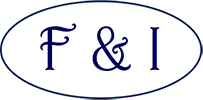Thoughts from a Future BHSI
The BHS F&I Association’s Annual Course Addington Manor EC 2017
By Kirsty Fontaine-Henley BHSSC and BHSISM
The F&I Annual Course has always been a date to look forward to in our calendar at Millfield, and particularly this year, as we were also able to bring one of our project horses along for Danny Anholt to ride with Chris Bartle.
Christoph Hess and Christopher Bartle were perfectly matched, having worked together before with their similar training philosophies.
Addington had ‘traditional weather conditions’ and plenty of familiar faces to talk to.
Thanks to Carole Broad who was generous with her time, observing Chris Bartle’s sessions with us, even though she wasn’t actually running a study group.
In addition, apologies to Eric Smiley for my impromptu interrogation/interview whilst watching Chris Bartle, but all joking aside, Eric was so interesting and generous with his time, sharing his knowledge and experience, even though he was also running a study group later on. All the study groups were over-subscribed, yet coaches are always generous with their time and expertise.
Chris Bartle was keen to get riders to demonstrate equal control and skill used in the dressage arena into the show jumping ring, hence removal of most of the rider’s martingales, particularly on the first day. There was discussion on Chris’s favored open inside rein, as opposed to that well-honed skill of inside rein using indirect bend into the withers.
Many sessions started with canter poles on a curve, establishing control of the horse’s shoulders and rider accuracy, with focus to the outside contact.
Often we can be reminded of the benefits of an exercise, one of which was a placing pole in front of most fences around an entire course, giving confidence to both horse and rider and helping to maintain the canter rhythm.
Chris frequently introduced useful phrases such as “Raise Your Gaze”, “Look to the Moon”, and “Don’t look for the distance, be aware of the distance”. On landing from each fence Chris wanted riders to be diligent about schooling, riding the dressage canter, with the ‘clock face’ in mind, to look ahead to 3, 6, 9 o’clock.
Having observed the young horse group, there was discussion of the pros and cons of a rider who entertains cheeky or naughty behaviour, relishing that kind of personality. Should they discipline this behaviour? Chris pointed out that often the horse will display the erratic behaviour when you least expect it or when it can be counterproductive it in competition. He suggested keeping the exercises simple to nurture confidence and understanding. There was some discussion on how to introduce a water tray.
In the gallery, Carole Broad helped us to discuss the control of the canter and who was in charge of the Energy Output – horse or rider? When schooling the canter for jumping, we should think of the requirements of the canter in dressage.
Chris also explained the 5 jump positions:
1 – The Racing Position – often mistakenly used.
2 – Light/Standing Position
3 – Landing Position – Best demonstrated by Michael Jung
4 – Sitting and Engaging Position
5 – And the ‘Oh Shit’ Position!
Christoph Hess was as ever enthusiastic from the first session to the very last, in which Pammy Hutton was running though her Grand Prix Test in preparation for the following weekend.
It was clear that on the first day, the focus was on the quality of the work, paces and forward balanced feel of all the horses. Many riders were encouraged to ride in light seat, and an open stride, long and low. Christoph was very insistent about the inside leg, both on position at the girth, and the understanding of ‘leg away’ to create forward feeling.
He explained that the young horse must initially train with both legs to go forward, then understand the inside leg aid, and then the outside leg aid. Jump saddles and short whips on the shoulders were also discussed when working with green horses.
He explained the use of the short whip on the shoulder to prevent the horse falling in, as an alternative to the long schooling whip onto the ribs to encourage the horse forward. Christoph literally poked Mark Cunliffe on his ribs and shoulder blade to demonstrate feel and the horse’s sensitivity to the whip!
Once again, those old exercises that we forget to use such as canter leg yield to trot to encourage the forward feel in the downwards transition.
To use Christoph’s phrase, the Convention was “Top Class” and a real privilege for Intermediate Instructors to attend as guests.
I’m looking forward to becoming a member of the F&I Association to benefit from all the training days on offer. I’m currently working towards the Senior Equitation Certificate to complete my BHSI.
